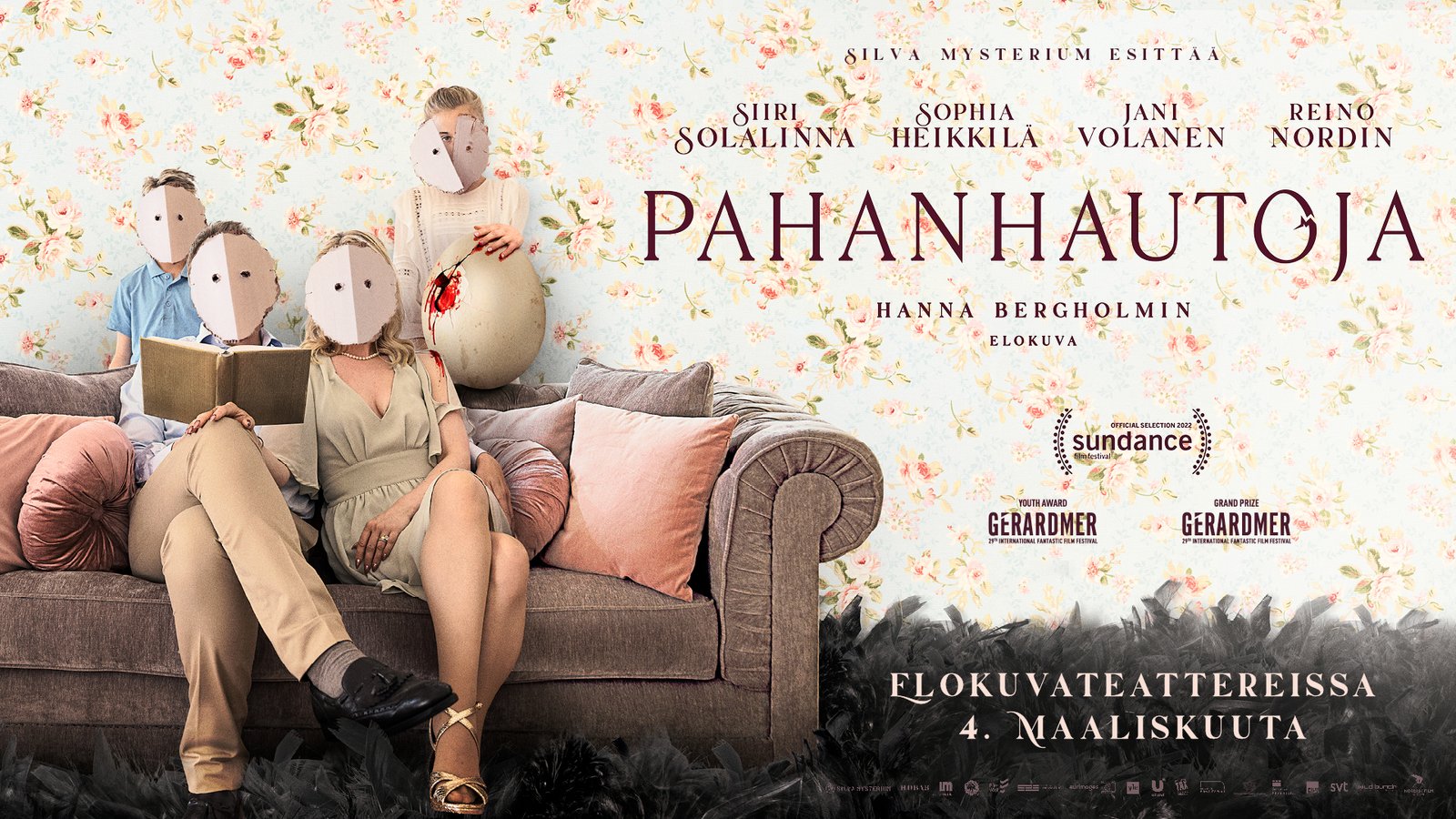
In the ever-evolving landscape of contemporary horror cinema, a new and unsettling voice has emerged from the Nordic region. “Hatching,” the feature film debut of Finnish director Hanna Bergholm, has captivated audiences worldwide with its haunting exploration of the dark underbelly of the “perfect family” façade. This chilling tale, which premiered at the prestigious Sundance Film Festival in 2022, has since garnered critical acclaim and a distribution deal in the United States through NEON.
What sets “Hatching” apart is its masterful use of body horror as a metaphor for the societal pressures and emotional turmoil that plague modern families. By delving into the complex dynamics between a young gymnast, Tinja, and her overbearing mother, the film weaves a tapestry of psychological tension and visceral unease that lingers long after the credits roll.
Deconstructing the “Perfect Family” Myth
At the heart of “Hatching” lies a scathing commentary on the façade of the “perfect family” that is so often curated and presented on social media. Tinja’s family, with their meticulously curated Instagram presence, represents the idealized version of domestic bliss that many strive for in the digital age. However, as the story unfolds, the cracks in this veneer begin to show, revealing a much darker and more complex reality.
Bergholm’s keen eye for detail and her ability to juxtapose the pristine, picture-perfect moments with the unsettling undercurrents of the family’s dynamics create a palpable sense of unease. The audience is drawn into the world of the Lehtinen family, only to be gradually confronted with the disturbing truths that lie beneath the surface.
The Symbolic Power of the Egg
At the center of the film’s narrative is the mysterious egg that Tinja discovers in the forest, which she subsequently brings into her home and nurtures. This seemingly innocuous object becomes a powerful symbol, representing the various themes and tensions that the film explores.
The egg, with its potential for new life and growth, serves as a metaphor for the expectations and pressures placed on Tinja by her mother. As the creature within the egg begins to hatch and transform, it mirrors Tinja’s own journey of self-discovery and the struggle to assert her own identity in the face of her mother’s overbearing control.
Moreover, the egg’s gradual metamorphosis into a grotesque and unsettling creature reflects the underlying horror that lurks beneath the family’s carefully curated image. The body horror elements, masterfully executed through practical effects, create a visceral and unsettling viewing experience that challenges the audience’s perceptions of beauty, normalcy, and the boundaries of the human form.
The Haunting Performance of Siiri Solalinna
At the heart of “Hatching” is the captivating performance of Siiri Solalinna, who portrays the young protagonist, Tinja. Bergholm’s decision to cast a real-life gymnast in the role was a stroke of genius, as Solalinna’s physical prowess and emotional range bring an authenticity and depth to the character that is truly remarkable.
Solalinna’s portrayal of Tinja’s internal struggle, as she navigates the pressures of her mother’s expectations and the growing unease surrounding the mysterious egg, is both heartbreaking and unsettling. Her ability to convey the character’s vulnerability, determination, and gradual descent into the unknown is a testament to her talent and the director’s keen eye for casting.
The director herself has acknowledged the rigorous selection process, noting that Solalinna was chosen from a pool of over 1,200 young actresses. This level of dedication to finding the right performer for the role is evident in the final product, as Solalinna’s performance anchors the film and elevates the overall emotional impact of the narrative.
The Influence of Nordic Noir
While “Hatching” firmly establishes itself within the realm of body horror, it also draws inspiration from the rich tradition of Nordic noir. The film’s muted color palette, brooding atmosphere, and focus on the darker aspects of human nature align it with the cinematic sensibilities of the Nordic region.
Bergholm’s directorial choices, such as the use of quick cuts and the emphasis on practical effects, create a sense of unease and tension that is reminiscent of the Nordic noir genre. The film’s exploration of family dynamics, societal pressures, and the underlying darkness that lurks beneath the surface of seemingly perfect lives, also echoes the thematic concerns that have long been a hallmark of Nordic storytelling.
However, “Hatching” ultimately transcends the boundaries of a single genre, blending elements of horror, psychological drama, and social commentary to create a truly unique and unsettling cinematic experience. The film’s ability to engage the audience on multiple levels, from the visceral to the cerebral, is a testament to Bergholm’s skill as a filmmaker and the depth of her creative vision.
The Limitations of “Hatching”
While “Hatching” is a remarkable achievement in many ways, the film is not without its limitations. As the reviewer notes, the narrative development can at times feel predictable, with the audience anticipating the various plot twists and revelations that unfold throughout the story.
The reviewer’s observation that the film lacks the kind of unexpected plot twist or narrative shift that would truly surprise the audience is a valid critique. In a genre that often thrives on subverting expectations, the relative predictability of “Hatching’s” storyline may leave some viewers feeling slightly underwhelmed.
Additionally, the reviewer points out that the film’s secondary characters, such as Tinja’s father and brother, are somewhat underdeveloped and feel “sidelined” in the larger narrative. This lack of depth in the supporting cast can, at times, detract from the overall immersive experience, as the audience’s attention is primarily focused on the central conflict between Tinja and her mother.
However, it is important to note that these limitations do not necessarily detract from the film’s overall strengths. Bergholm’s masterful use of body horror, the haunting performance of Siiri Solalinna, and the film’s thematic exploration of the “perfect family” myth remain the driving forces that elevate “Hatching” above its minor narrative shortcomings.
A Chilling Exploration of the Darker Corners of Family Life
In the end, “Hatching” stands as a powerful and unsettling cinematic experience that delves into the darker corners of family life. Hanna Bergholm’s directorial debut showcases her talent for blending body horror, psychological tension, and social commentary to create a truly memorable and thought-provoking film.
Through the lens of the Lehtinen family’s seemingly perfect facade, “Hatching” challenges the audience to confront the underlying anxieties and insecurities that often lurk beneath the surface of modern domestic life. The film’s use of the egg as a symbolic centerpiece, coupled with Siiri Solalinna’s haunting performance, creates a visceral and immersive viewing experience that lingers long after the credits have rolled.
While the film may not entirely subvert the audience’s expectations in terms of narrative, its ability to engage the viewer on multiple levels, from the visceral to the cerebral, is a testament to Bergholm’s skill as a storyteller. “Hatching” stands as a bold and unsettling addition to the canon of contemporary horror cinema, solidifying the director’s place as a rising voice in the genre.



